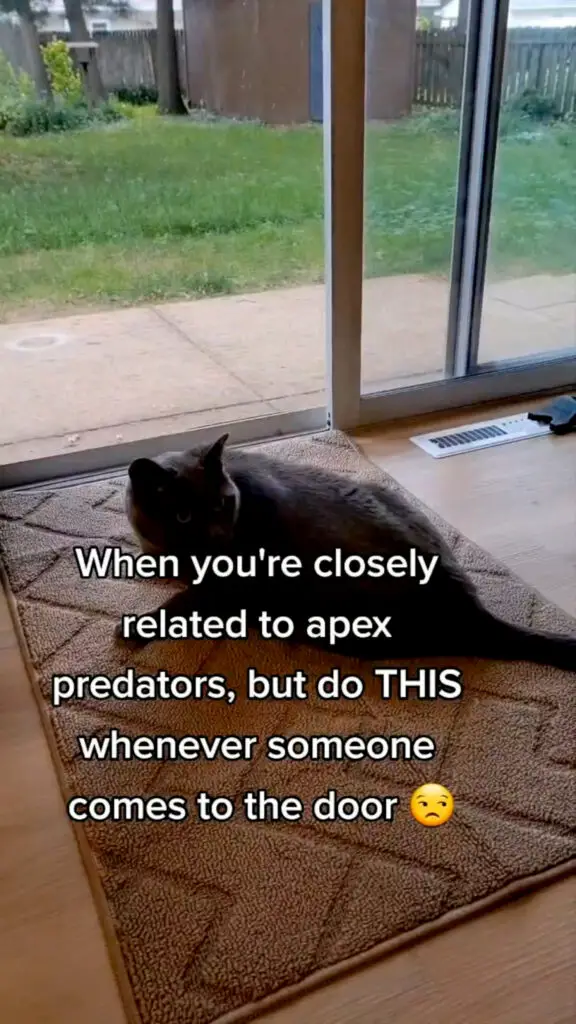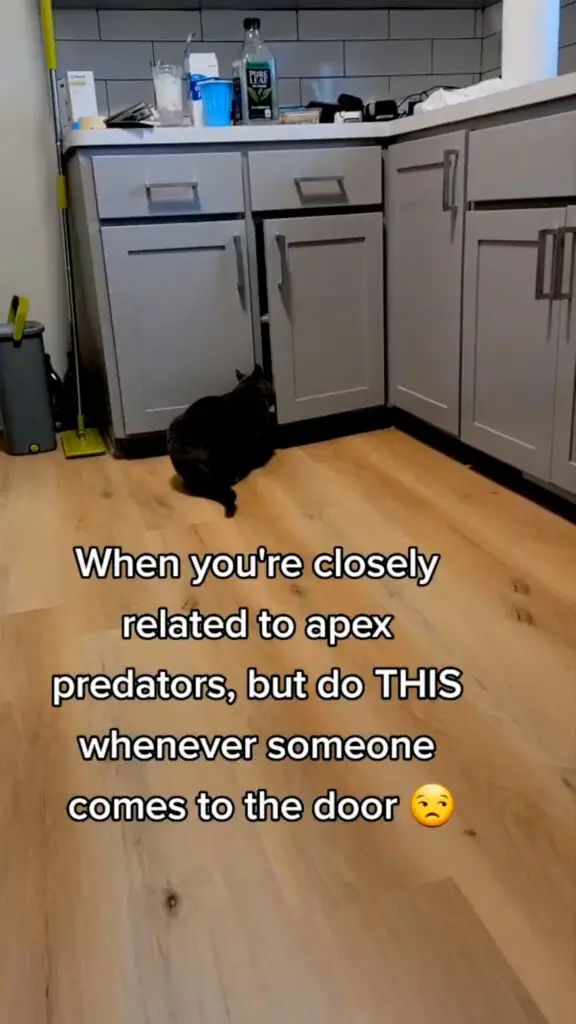Story By: Ana Marjanovic, Sub-Editor: Michael Leidig, Agency: Newsflash
This is the viral moment Sherlock the cowardly cat hides in a cupboard whenever someone comes to the door.
The cute clip was shared on the TikTok page ‘Sherlock – Cat on the Case’ where it has gone viral with 2.5 million views.
Sherlock’s owner accompanied the video with the message: “He’s gonna be bummed when our pots and pans arrive and ruin his hiding spot.”

The video features the caption: “When you’re closely related to apex predators, but do this whenever someone comes to the door.”
In the footage, Sherlock is seen heading for the kitchen cupboards and opening one door with his nose before heading inside to apparently hide from the visitor at the front door.
Battersea Dogs and Cats Home in London said: “When there is something, or someone, nearby that is causing them concern… they may be frightened or just wary about something unfamiliar and might want to keep out of the way, just in case.”

According to Cats Protection, house cats come from the Felidae family and are closely related to tigers, lions and other big cats.
They began to evolve about 25 million years ago and the “oldest cat lineage is the Panthera, which split from its common ancestor 10.8 million years ago. This is the line our modern-day big cats, such as tigers (Panthera tigris), panthers (Panthera pardus) and lions (Panthera leo)”:
Cats Protection added: “The Felidae family continued to evolve and branch off into different common ancestors until 3.4 million years ago when the Felis genus appeared. This group includes the wildcat (Felis silvestis), the jungle cat (Felis chaus) and our own domestic cats (Felis catus).”



